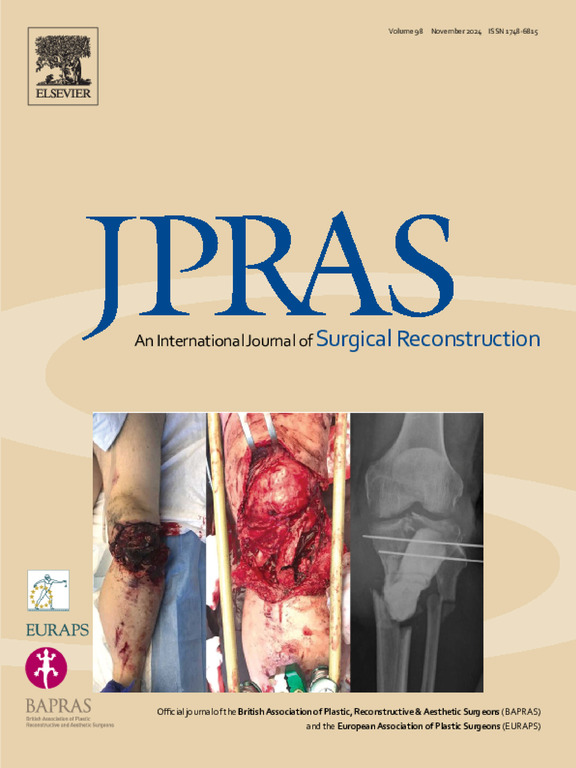Reconstruction of zone 2 extensor tendon defects with split-thickness turn-down flap: A new technique
IF 2
3区 医学
Q2 SURGERY
Journal of Plastic Reconstructive and Aesthetic Surgery
Pub Date : 2025-02-12
DOI:10.1016/j.bjps.2025.02.004
引用次数: 0
Abstract
Reconstruction of tendon defects is a challenge for hand surgeons. Tendon autografts can be used to repair these defects but can cause donor site morbidities. Although turn-down tendon flaps were described for the reconstruction of tendon defects in the lower extremity, there is not enough knowledge regarding the upper extremity. This study investigated the outcomes of reconstruction of zone 2 extensor tendon defects with turn-down extensor tendon flap. Seven fingers of six patients with zone 2 extensor tendon defects treated with the turn-down extensor tendon flap technique were retrospectively evaluated. Patients’ demographics, mechanism of injury, length of stay at the hospital, and complications were obtained from hospital registry records. Postoperative outcome measures in the 6th month included Michigan hand Outcomes Questionnaire scores, active, passive, and functional range of motions (ROM) at the distal interphalangeal joint (DIP). In the postoperative 6th-month follow-up, the mean passive extension and flexion ROM of the DIP joint were 4.4 ± 0.9 (range, −3 to −5) and 79.2 ± 2.4 (range, 75 to 82), respectively. The mean active extension and flexion ROM of the DIP joint were 3.5 ± 1.2 (range, 2 to 5) degrees and 77.6 ± 2.8 degrees (range, 73 to 82), respectively. The mean minimum and maximum functional ROM of the DIP joint were 6.8 ± 1.3 (range, 5 to 9) and 54.8 ± 3.0 (range, 50–60), respectively.
The turn-down flap technique appears to be safe and effective in reconstruction zone 2 extensor tendon defects.
Level of evidence
Level IV, Case series
求助全文
约1分钟内获得全文
求助全文
来源期刊
CiteScore
3.10
自引率
11.10%
发文量
578
审稿时长
3.5 months
期刊介绍:
JPRAS An International Journal of Surgical Reconstruction is one of the world''s leading international journals, covering all the reconstructive and aesthetic aspects of plastic surgery.
The journal presents the latest surgical procedures with audit and outcome studies of new and established techniques in plastic surgery including: cleft lip and palate and other heads and neck surgery, hand surgery, lower limb trauma, burns, skin cancer, breast surgery and aesthetic surgery.

 求助内容:
求助内容: 应助结果提醒方式:
应助结果提醒方式:


